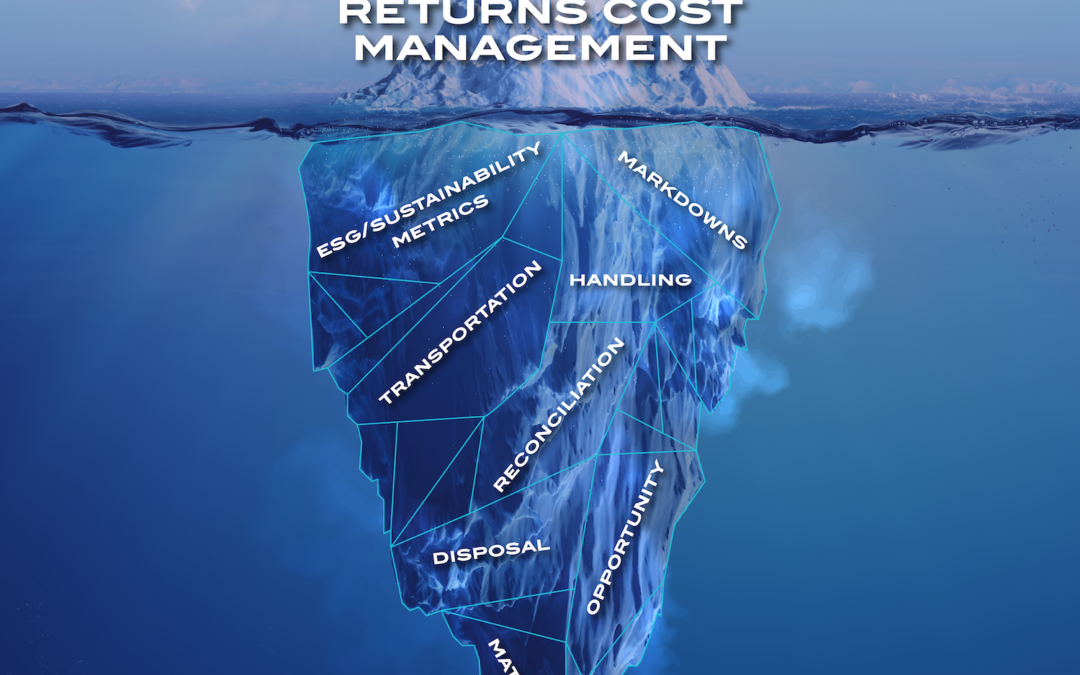There are many hidden costs associated with returns and slow, obsolete, and excess inventory. Not seeing the whole picture can, and will, sink your profitability. Here are just a few ways in which hidden costs affect your bottom line:
Sustainability
Sustainability metrics are becoming increasingly important to the efforts of reducing the hidden costs of product returns. Incorporating sustainability into the decision-making process can help reduce operating expenses, such as the cost of water, carbon, and other raw materials. Companies that pay closer attention to these metrics also fare better with investor and consumer demands. The best companies are focused on lowering their carbon footprint, improving sustainability across all areas of the business, and doing their part to combat climate change.
Markdowns
Markdowns are typically used to speed up sales of slow-moving, obsolete, or seasonal inventory. While it may make sense in the short term to implement retail markdowns, it could negatively impact the bottom line for businesses in the long term. The first potential disadvantage of markdowns is lower profit margins, especially if additional price reductions are needed to sell through the inventory. Additionally, the brand equity decreases as consumers see that the item is being discontinued. Ultimately the retailer will return any unsold inventory after the markdown process leaving you with a shorter sales window for any salvageable products that have a “best by…” date.
Transportation
Transportation is a hidden cost that affects product returns on a large scale. As resources like oil and diesel fuel rise in price, it becomes increasingly more important to optimize freight & shipping costs, especially for reverse logistics. Limiting the handling and time in transit reduces costs, however, the compound effect of having experts in returns processing, salvaging, and remarketing adds value to your bottom line. Therefore, lower transportation expenses and improved efficiencies must be continually sought in order to decrease related hidden costs associated with reverse logistics.
Handling
Handling expenses often occur in tandem with shipping costs and negatively affect product returns for many companies. Returns that are subject to multiple touches and scans have an increase in additional damages which negatively impacts the salvage, resell, and recovery rate. Add to that the increased likelihood of shrinkage and the extra time involved with multiple handlings along the way, accelerating the costs of returns.
Reconciliation
Reconciliation is the practice of comparing actual product returns received vs. returns claimed by the retailer, wholesaler, or customer. Despite its importance, companies sometimes neglect this step or overlook the employee costs associated with customer reconciliation. Reconciliation enables businesses to have improved visibility of their inventory throughout the entire reverse logistics process. This is extremely important because retailers can lose a third of their revenue from returns. For example, in 2018, online fashion retailer Revolve did $499 million in sales but spent $531 million on returns after considering processing costs and lost sales. Through reconciliation, companies can avoid unexpected losses and more accurately account for the cost of processing, salvaging, and remarketing returns.
Disposal
According to a 2020 study, processing the average return typically costs businesses 59% of the original sales price, including disposal. Additionally, few companies collect the necessary information (data) to accurately determine the quality or state of the returned product, leading to unnecessary waste and hurting sustainability efforts. Without effective use of reverse logistics, it is difficult to develop a customized solution to minimize waste volume and reduce disposal costs while maximizing sustainability opportunities. Partnering with a reverse logistics company with expertise in sustainable processing, salvaging, and remarketing enables businesses to identify areas of opportunity to improve the packaging to reduce damages.
Opportunity
When developing return policies and processes, businesses must consider the opportunity cost of the various decisions. These opportunity costs could occur in any step of the reverse logistics process. For example, the employee costs associated with scheduling a time for returns to be picked up, coordinating freight/transportation, and minimizing the chance of paying higher less than truckload (LTL) rates. The best-in-class companies rely on reverse logistics experts to schedule and coordinate returns across multiple manufacturers to get the best full truck load (FTL) rates.
Material
Time is an exponential cost factor for returns, especially if some can be salvaged and remarketed on the secondary markets. Many products have “Best if Used by” or expiration dates. Some products tend to be seasonal in nature while others may be left over from displays or undergoing packaging changes. In each case, time has an exponentially negative impact on a product’s value. When factoring in the transit, handling, and refurbishing or repackaging time, additional time is required to remarket and sell the salvaged inventory.
Don’t let the hidden cost of product returns sink your profitability!
Best-in-class organizations have a comprehensive reverse logistics strategy that drives efficiencies, reduces costs, and has a positive contribution to both the top and bottom lines! Working with reverse logistic subject matter experts such as DRS, enables companies to better understand best practices, and the latest regulations for recalls and disposal, and get the most value for salvageable returns. There is a lot to consider and understand when developing your reverse logistics strategy. The risks and potential negative impact on revenue growth are too high for organizations not to be working with a premier reverse logistic expert.
DRS experts have the tools and knowledge to help you manage your product returns and protect your bottom line. Contact us today to get started.

